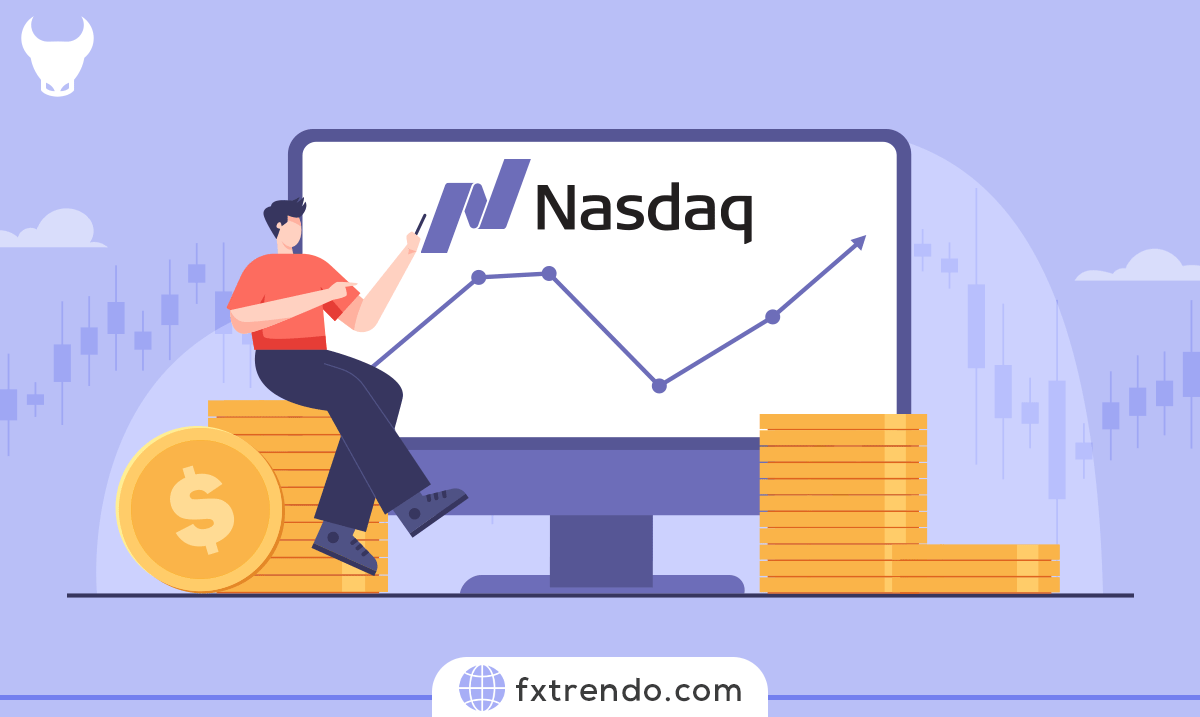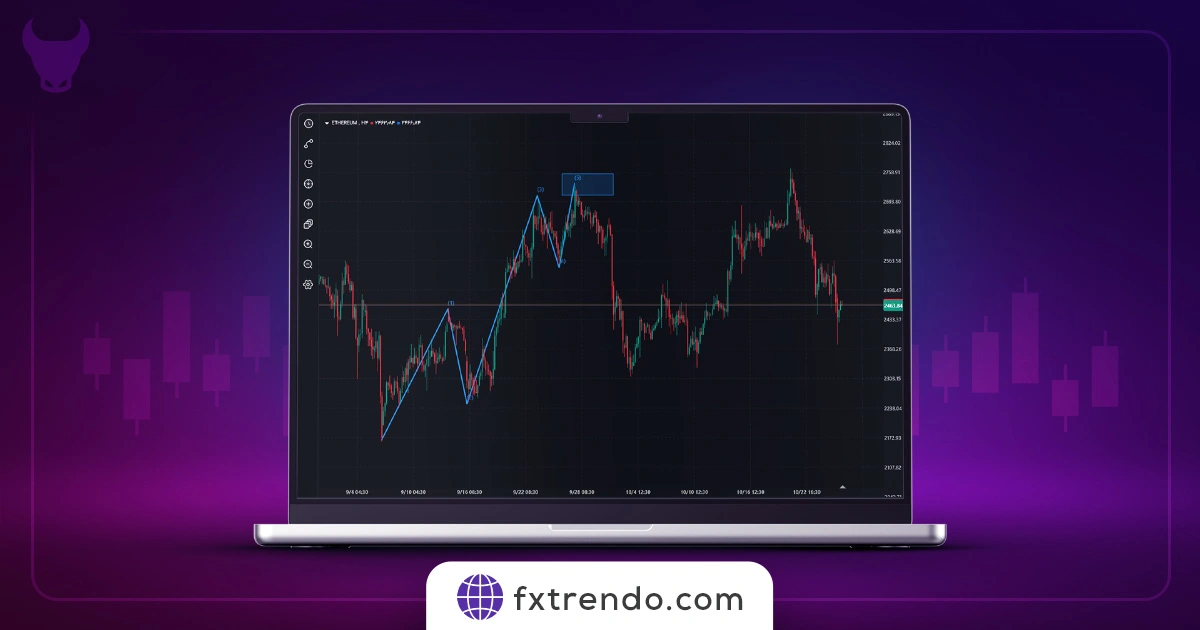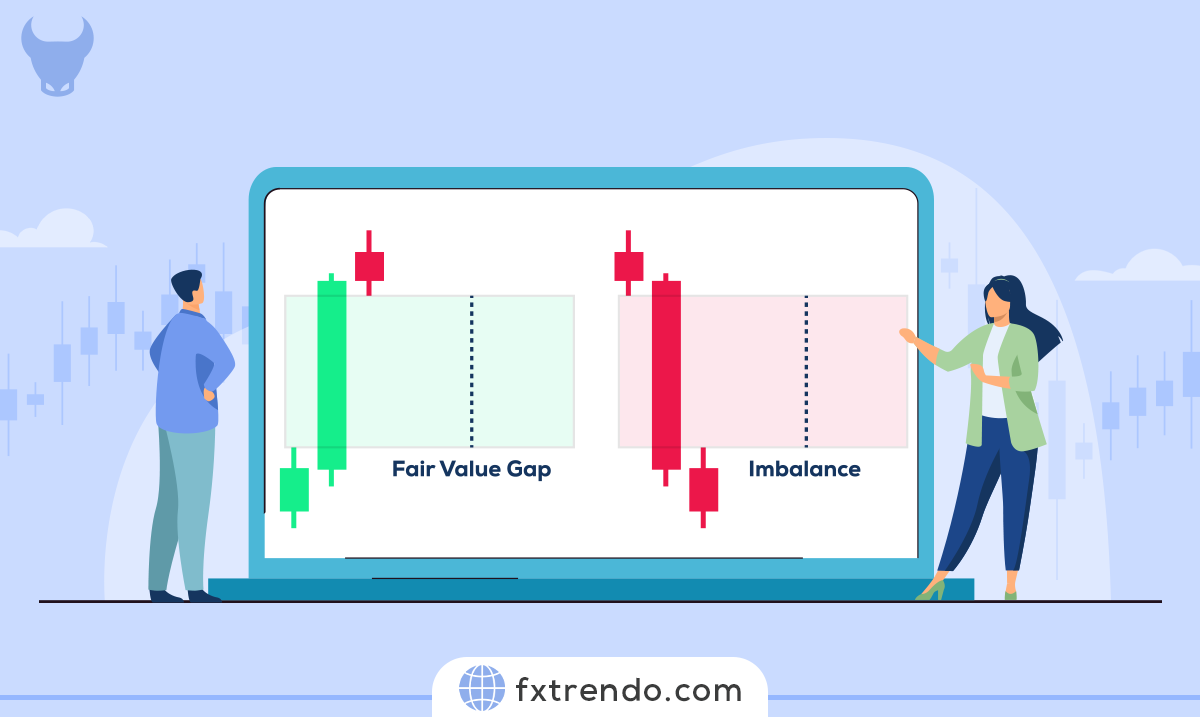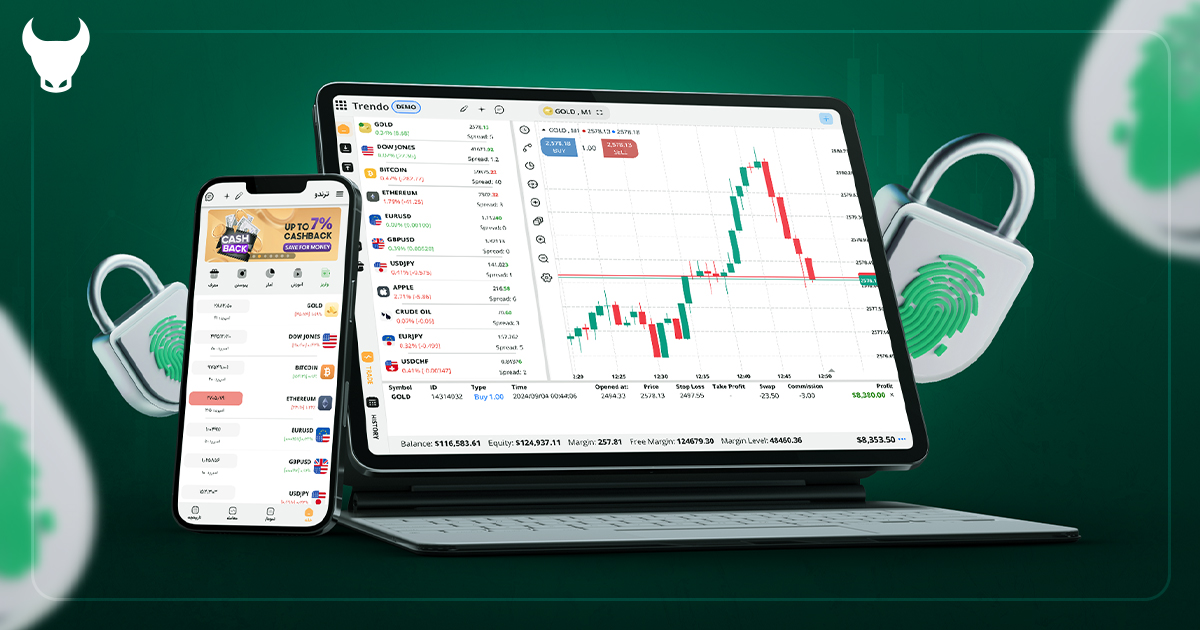How Does NASDAQ Affect the Stock Market?


The NASDAQ Weighted Index is one of the most important stock indices in financial markets, providing a favorable outlook for investors and traders.
In this blog post, we’ll explore how the NASDAQ affects the stock market. We’ll delve into its role in shaping market trends, its impact on investor sentiment, and how its performance can serve as a barometer for the broader economy.
Whether you’re an experienced investor or just starting out, understanding the NASDAQ’s influence can help you make more informed decisions in the ever-changing world of finance.
Contents
What is NASDAQ?
The NASDAQ, short for the National Association of Securities Dealers Automated Quotations, is a major American stock exchange based in New York City. Unlike traditional exchanges that operate on a physical trading floor, NASDAQ is entirely electronic, making it the world’s first electronic stock market. This digital approach allows for faster and more efficient trading.
NASDAQ is known for its focus on technology and innovation, hosting many of the world’s leading tech companies, such as Apple, Microsoft, and Google. It operates 29 markets, one clearinghouse, and five central securities depositories across the U.S. and Europe. This extensive network supports a vast array of financial activities, from trading stocks to clearing transactions.
History of the NASDAQ Weighted Index
Next, we will examine the history of this index, which is one of the most recognized stock market indices in the world.


A picture of the American stock Exchange in New York City
NASDAQ was established in 1971 as an electronic securities market in New York City. It was created with the goal of developing a trading system based on electronic technology and communication in the capital market. Since then, NASDAQ has become known as one of the main centers for trading various securities, particularly those of technology companies. Over time, NASDAQ has expanded its expertise into various sectors.
Today, this index includes not only technology companies but also firms related to communications, healthcare, energy, and other industries. This diversity has allowed NASDAQ to be used as a broad measure of overall capital market performance.
Major Indices of NASDAQ
The NASDAQ hosts several key indices that provide insights into market performance, particularly in the technology sector. Here are the major ones:
1. NASDAQ Composite: This index includes almost all stocks listed on the NASDAQ exchange, making it a broad indicator of market performance. It covers over 2,500 companies, reflecting the overall health of the market, especially in tech and growth sectors.
2. NASDAQ-100: This index comprises the 100 largest non-financial companies listed on the NASDAQ. It includes giants like Apple, Microsoft, and Amazon. The NASDAQ-100 is a key benchmark for the tech industry and is often used to gauge the performance of large-cap technology stocks.
3. NASDAQ Biotechnology Index: This index focuses on companies in the biotechnology and pharmaceutical sectors. It includes firms involved in research and development of new treatments and technologies, providing a snapshot of innovation and growth in the biotech industry.
Factors Affecting the NASDAQ Index
Changes in the NASDAQ Weighted Index are influenced by various factors, some of the most significant of which include:
1. Performance of Included Companies: The performance of the companies included in the NASDAQ index has a direct impact on its fluctuations. The rise and fall in the value of these companies directly affect the index.
2. Changes in Different Economic Sectors: The performance of various economic sectors, such as technology, communications, healthcare, and energy, significantly influences changes in the NASDAQ index. For instance, during certain periods, the technology sector may have a more pronounced effect on the index due to its superior performance.
3. Economic and Political Events: Economic events such as economic growth, unemployment rates, and currency fluctuations can have a direct impact on the index's movements. Additionally, political and economic decisions may also affect the index in the future.
4. Global Conditions: Global events, including economic crises, changes in international trade, and political tensions, are factors that influence the NASDAQ index.
5. Monetary and Fiscal Policies: Decisions made by central banks regarding interest rates and monetary and fiscal policies can have a significant effect on this index.
6. Seasonal and Periodic Changes: Certain industries and companies perform differently during various seasons of the year, which can create temporary impacts on the index.
The combination of these factors leads to fluctuations in the NASDAQ index, making it essential to analyze these influences accurately for predicting and interpreting changes in the capital market.
NASDAQ’s Role in the Stock Market
The NASDAQ is a major player in the stock market, providing a platform for electronic trading of securities. As the second-largest stock exchange globally, it lists thousands of companies, with a strong focus on technology and innovation.
NASDAQ’s electronic trading system ensures faster and more efficient transactions compared to traditional stock exchanges. It offers trading in stocks, options, futures, ETFs, and fixed-income products.
The NASDAQ Composite Index, which includes over 2,500 companies, is a key indicator of market sentiment and trends. Investors and analysts closely watch its performance to gauge the health of the technology sector and the broader market.
Additionally, NASDAQ provides an alternative to the New York Stock Exchange (NYSE) for companies looking to list their stocks. This competition fosters innovation and offers more options for investors and companies.
Briefly, NASDAQ’s role in the stock market includes efficient electronic trading, influencing market trends, and providing a competitive platform for companies and investors.
Economic Indicators and NASDAQ
Economic indicators help investors understand the economy’s health. These include data on employment, inflation, GDP growth, and consumer confidence. The NASDAQ is significantly influenced by these indicators.
For example, high employment rates can boost consumer spending, positively affecting NASDAQ-listed companies. Conversely, high inflation can lead to higher interest rates, which might negatively impact tech companies that rely on borrowing for growth.
GDP growth is another crucial indicator. Strong GDP growth signals a healthy economy, encouraging investment in NASDAQ-listed companies. On the other hand, low consumer confidence can lead to reduced spending and investment, affecting stock prices.
By monitoring these economic indicators, investors can better predict market trends and make strategic decisions.
The Impact of NASDAQ on the Global Economy
The NASDAQ significantly influences the global economy due to its role as a major stock exchange, particularly for technology companies. As home to many of the world’s largest and most innovative firms, the NASDAQ drives technological advancements and economic growth. When companies listed on the NASDAQ perform well, it can boost investor confidence worldwide, leading to increased investment and economic activity.
Moreover, the NASDAQ’s electronic trading system enhances market efficiency and transparency, which are crucial for global financial stability. By providing a reliable platform for trading, the NASDAQ helps maintain liquidity and ensures that markets operate smoothly.
Read more: What Is Correlation In Forex? The Role Of Correlation In Trading
The NASDAQ also impacts global economic policies. For instance, central banks and governments monitor NASDAQ trends to gauge economic health and make policy decisions. A strong performance by NASDAQ-listed companies can signal economic strength, influencing interest rates and monetary policies.
NASDAQ vs. Other Major Indices
The NASDAQ, S&P 500, and Dow Jones Industrial Average (DJIA) are three of the most well-known stock market indices, each serving a unique purpose in the financial world.
1. NASDAQ Composite: This index includes almost all stocks listed on the NASDAQ exchange, with a strong emphasis on technology and growth companies. It is a market-capitalization-weighted index, meaning companies with larger market values have a greater impact on the index’s performance.
2. S&P 500: The S&P 500 tracks 500 of the largest companies in the U.S. across various sectors. It is also market-capitalization-weighted, providing a broad view of the overall market. This index is often used as a benchmark for the performance of the U.S. stock market.
3. Dow Jones Industrial Average (DJIA): The DJIA includes 30 large, publicly-owned companies based in the U.S. Unlike the NASDAQ and S&P 500, the DJIA is price-weighted, meaning companies with higher stock prices have more influence on the index’s movements. It is known for representing well-established, blue-chip companies.
Each index offers different insights. The NASDAQ is tech-heavy and reflects the performance of innovative companies. The S&P 500 provides a comprehensive view of the market, while the DJIA focuses on the stability and performance of major corporations.
Read more: Comparing the Forex market & Cryptocurrency; Which one is better?
Comparison NASDAQ with Other Major Indices
When comparing the NASDAQ to other major indices the Dow Jones Industrial Average (DJIA) and the S&P 500, several key differences stand out.
1. Composition: The NASDAQ Composite Index includes over 2,500 companies, with a strong emphasis on technology and innovation. The DJIA consists of 30 large, well-established companies across various industries, while the S&P 500 includes 500 of the largest U.S. companies by market capitalization, offering a broader market view.
2. Weighting Method: The NASDAQ is a market-capitalization-weighted index, meaning companies with larger market values have a greater impact on the index’s performance. The S&P 500 also uses market-cap weighting, but the DJIA is price-weighted, where companies with higher stock prices have more influence on the index.
3. Sector Focus: The NASDAQ is heavily weighted towards technology and biotech sectors. The S&P 500 provides a more balanced representation of various sectors, while the DJIA includes a mix of industries but is less tech-centric.
4. Market Coverage: The NASDAQ offers a comprehensive view of the tech sector and emerging companies, making it a barometer for innovation and growth. The S&P 500 is often seen as a gauge of the overall U.S. economy, and the DJIA represents the performance of blue-chip stocks.
How to Invest in NASDAQ?
Investing in the NASDAQ can be a great way to gain exposure to leading technology and innovation companies. Here’s a simple guide:
1. Choose a Broker or Trading Platform: Open an account with a broker or trading platform that offers access to NASDAQ stocks.
2. Open a Trading Account: Provide personal information and verify your identity to set up your account.
3. Deposit Funds: Add funds to your account via bank transfer, credit card, or other payment methods.
4. Buy NASDAQ Stocks or ETFs: Start buying NASDAQ stocks or exchange-traded funds (ETFs) for diversification.
5. Monitor Your Investments: Keep track of your investments and stay informed about market trends.
6. Consider Professional Advice: Seek advice from a financial advisor if you’re new to investing or unsure about your choices.
Investing in the NASDAQ offers growth potential and exposure to innovative companies. Follow these steps to start your investment journey with confidence.
Conclusion
The NASDAQ index, as one of the most important and reputable indices in the global stock market, has wide-ranging impacts and applications. From measuring market performance and guiding investor decisions to influencing other markets, its significance is undeniable.
This index provides investors with precise information about the state of the U.S. economy. With its focus on technology and internet companies, NASDAQ serves as a fundamental benchmark for evaluating the performance of this crucial industry.
Considering these explanations, it is clear that the NASDAQ index plays a vital role in analyzing and predicting stock market performance. It is widely used by investors and economists for making informed decisions.
FAQ
How is the NASDAQ index weighted?
What do you need to know about the NASDAQ?
What affects NASDAQ the most?
Which stock has the highest weightage in NASDAQ?
What makes the NASDAQ go up or down?
What happens when a stock goes to NASDAQ?
Why is the NASDAQ important to investors?
پست مرتبط
پربازدیدترین ها
0




















